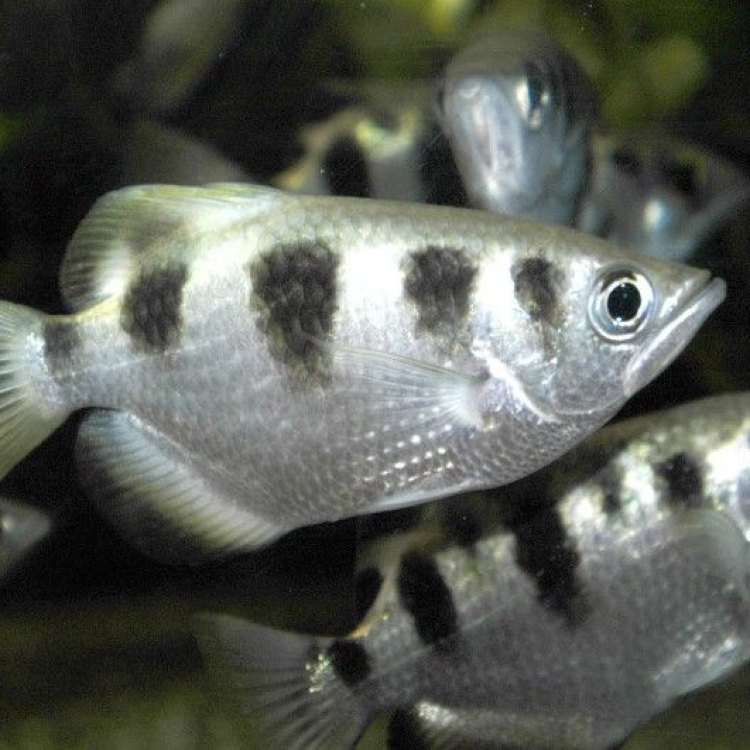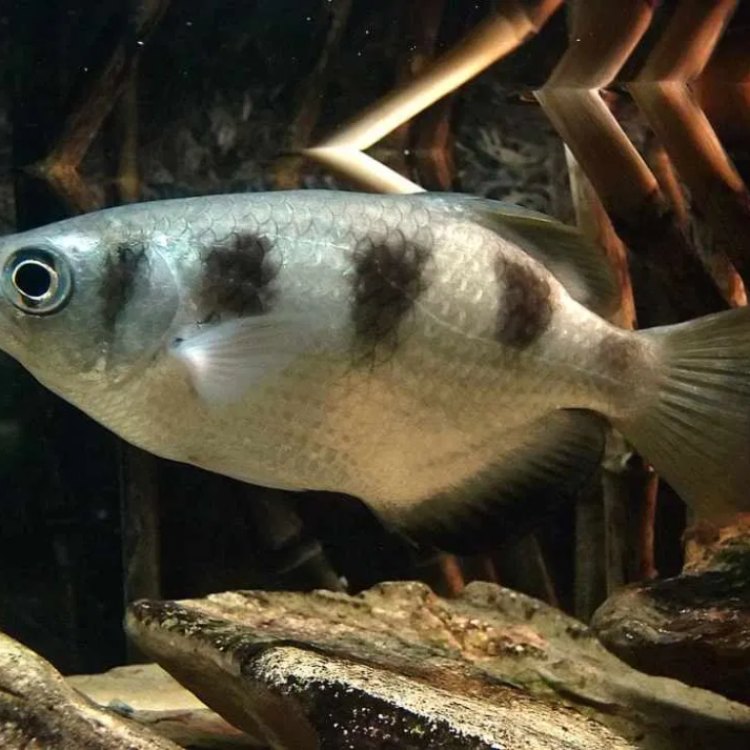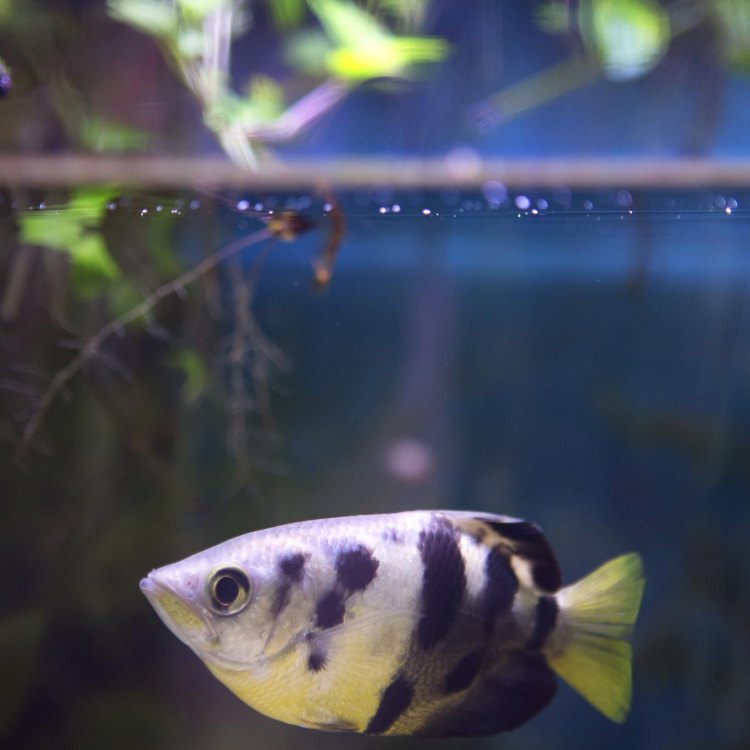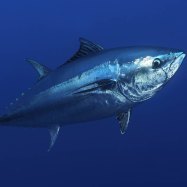
Archerfish
Up to 40 centimeters (16 inches)
Did you know? The archerfish has incredible aim, shooting water droplets at its prey to knock them into the water. Growing up to 40cm long, it can be found in rivers, estuaries, and coastal waters. This unique Toxotidae family member has a slender shape, perfect for swift swimming in its mangrove home.
Animal Details Summary:
Common Name: Archerfish
Kingdom: Animalia
Habitat: Freshwater and brackish water
The Unlikely Sharpshooters: The Fascinating Archerfish
The world is full of diverse and incredible animals, each with their unique characteristics and behaviors. Among these magnificent creatures is the Archerfish, a small freshwater and brackish water inhabitant native to Southeast Asia and Australia. With its peculiar hunting method and extraordinary abilities, the Archerfish has captured the attention and curiosity of both scientists and nature enthusiasts.The Archerfish belongs to the family Toxotidae, a group of small fishes commonly known as archerfishes Archerfish. It is scientifically referred to as Toxotidae, derived from the Greek word "toxotes," which means archer. This name perfectly encapsulates the extraordinary hunting tactic employed by these aquatic creatures.
The Archerfish belongs to the kingdom Animalia, class Actinopterygii, and order Perciformes, making it related to other fish species such as cod, tuna, and perch. However, what sets it apart is its unique physical features and behavior, making it a standout in the underwater world.
Known for its slender and elongated body, the Archerfish can reach up to 40 centimeters (16 inches) in length. Its silver or yellowish body is adorned with dark bands, providing great camouflage in their natural habitats. These animals are found in rivers, estuaries, mangroves, and coastal waters, making them adaptable to various environments.
One of the remarkable traits of the Archerfish is its sharpshooting abilities. Unlike other fish species that use their mouths to capture prey, these cunning creatures use their mouths as a powerful weapon to hunt Archaeoindris. They have a unique set of teeth that enables them to create a powerful jet of water to shoot down insects and other small organisms hanging on leaves or branches above the water.
But how do these fish achieve such an extraordinary feat? It all starts with their hunting strategy. When the Archerfish spots its prey on a nearby branch or leaf, it swims just below the surface of the water, carefully lining up its target with its line of sight. Then, it takes a mouthful of water and firmly places its tongue against the roof of its mouth, creating a pressure chamber. Finally, with a quick flick of its tongue, the Archerfish releases the water, creating a strong jet that can knock down its prey into the water, making it an easy catch.
This unique hunting method not only requires precise aim but also excellent vision and intelligence. Recent studies have revealed that Archerfish possesses exceptional visual perception that enables them to calculate the precise trajectory and timing of their shots. They have also shown the ability to adapt to changing situations, making them incredibly intelligent animals.
Another extraordinary aspect of Archerfish is its geographical distribution. These fish are found in multiple countries, including Australia, Indonesia, and Thailand, making them a common sight in these regions. These animals thrive in freshwater and brackish water habitats, a mix of saltwater and freshwater, providing them with a diverse food source.
Speaking of food, the Archerfish is a carnivorous feeder, dining on a variety of insects, small fish, and crustaceans. They are opportunistic hunters, patiently waiting for their prey to come within their range. But, as they say, "the early bird catches the worm," and for the Archerfish, it's all about precise timing and accurate aim.
Apart from being skilled hunters, Archerfish also have a vital ecological role in their natural habitats. They help control insect populations and contribute to the health of the ecosystem. Their unique diet also helps keep underwater vegetation in check, preventing overgrowth.
However, despite their fantastic abilities, the Archerfish is susceptible to various threats and challenges. Pollution, overfishing, and habitat destruction pose a significant threat to these creatures. As more and more freshwater sources are converted for human use, the Archerfish's natural habitat is increasingly diminishing, putting the species at risk.
Conservation efforts are being made to protect these remarkable animals, but it's essential to raise awareness and educate people about their significance in the ecosystem. Proper waste management and sustainable fishing practices can also help preserve their habitats, ensuring their survival for future generations to witness.
In conclusion, the Archerfish is an unusual and extraordinary animal that has proven time and again that size does not matter when it comes to survival. With its unique hunting method, intelligence, and adaptability, these fish have captured the hearts and minds of many. As we continue to explore and discover the wonders of our world, we can only hope to learn from these fascinating creatures and do our part in preserving their existence.

Archerfish
Animal Details Archerfish - Scientific Name: Toxotidae
- Category: Animals A
- Scientific Name: Toxotidae
- Common Name: Archerfish
- Kingdom: Animalia
- Phylum: Chordata
- Class: Actinopterygii
- Order: Perciformes
- Family: Toxotidae
- Habitat: Freshwater and brackish water
- Feeding Method: Carnivorous
- Geographical Distribution: Southeast Asia and Australia
- Country of Origin: Multiple countries including Australia, Indonesia, and Thailand
- Location: Rivers, estuaries, mangroves, and coastal waters
- Animal Coloration: Silver or yellowish with dark bands
- Body Shape: Slender and elongated
- Length: Up to 40 centimeters (16 inches)

Archerfish
- Adult Size: Around 15 to 30 centimeters (6 to 12 inches)
- Average Lifespan: Around 5 to 7 years
- Reproduction: Eggs laid in floating plants
- Reproductive Behavior: External fertilization
- Sound or Call: No specific sound or call
- Migration Pattern: Non-migratory
- Social Groups: Can form loose groups
- Behavior: Hunting by shooting water at insects above the water surface
- Threats: Pollution, habitat destruction, and overfishing
- Conservation Status: Not globally threatened
- Impact on Ecosystem: Help control insect populations
- Human Use: Popular in freshwater aquariums
- Distinctive Features: Large eyes and mouth
- Interesting Facts: Archerfish can shoot down insects with remarkable accuracy using jets of water
- Predator: Bigger fish and birds

Toxotidae
The Amazing Archerfish: Nature's Water Gun
Have you ever heard of a fish that can shoot down its prey with jets of water? If not, let me introduce you to the amazing Archerfish. With its distinctive features and unique hunting behavior, the Archerfish has captured the attention of many and has become a popular choice for freshwater aquariums. But there is so much more to this fascinating fish than just its aesthetically pleasing appearance. In this article, we will dive deep into the world of Archerfish and uncover its secrets and unique abilities PeaceOfAnimals.Com.Let's start with some basic information about the Archerfish. As the name suggests, this fish belongs to the family Toxotidae and is known for its incredible ability to precisely shoot down its prey using jets of water. They are primarily found in brackish and freshwater habitats of Southeast Asia and Northern Australia. The Archerfish comes in a variety of species, with the largest reaching around 30 centimeters (12 inches) in length, while the smallest is only about half that size.
Around 5 to 7 Years: A Short but Action-Packed Lifespan
In the wild, Archerfish can have an average lifespan of around 5 to 7 years. However, in captivity, with the right care and environment, they can live up to 10 years. While this may seem like a short lifespan compared to other fish species, it is packed with action and fascinating behaviors.Tough Times for Reproduction: Eggs in Floating Plants
Archerfish reproduction is not an easy feat. Female Archerfish lay their eggs in floating plants, and the male fertilizes them externally Asp. This may seem like a straightforward process, but it is not without its challenges. The eggs need a stable and calm environment to develop, which can be difficult to find in the archerfish's natural habitat of flowing rivers and streams. Therefore, they often rely on man-made environments such as ponds and aquariums for successful reproduction.No Sound But Plenty of Communication
While the Archerfish may not have a specific sound or call, they are not mute. They communicate with each other through visual cues and movements. They have a complex visual system, with large eyes that can move independently, allowing them to have a wider field of view. They also have an enlarged mouth, which gives them a unique appearance and helps them communicate with other Archerfish.Staying Put: Non-Migratory Behavior
Unlike many other fish species, Archerfish are non-migratory. They tend to stay in their habitat throughout their lifespan. However, there have been cases where they have been seen moving to nearby rivers or streams during the wet season, possibly in search of food.Social Butterflies: Forming Loose Groups
Archerfish are social creatures and can form loose groups, especially during feeding time. This behavior helps them hunt more effectively and also provides safety in numbers. However, they are not known to have strong social bonds like other fish species. They tend to be more focused on their prey rather than interacting with each other for long periods.Water Gun Hunting: Archerfish's Unique Behavior
Now, let's talk about the most famous aspect of Archerfish, their hunting behavior. As mentioned earlier, they have a remarkable ability to shoot down insects with water jets. But how do they do it? Archerfish have a specialized organ called a “pseudobranch” located under their gills, which allows them to shoot water with precision.When an Archerfish spots its prey, typically an insect perched on a bush or a low-hanging branch above the water, it will swim very close to the surface and take a mouthful of water. The fish then presses its tongue against the pseudobranch, forcing the water out of its mouth with incredible force, creating a jet that can travel up to two meters (6.5 feet) in distance. This jet of water can displace the surface tension of the water and knock the insect off its perch and into the water, where the Archerfish promptly devours it.
Threats and Conservation Status: Fighting for Survival
Unfortunately, like many other species, Archerfish face numerous threats, including pollution, habitat destruction, and overfishing. Pollution from human activities, such as agricultural runoff and waste dumping, can harm the delicate aquatic ecosystems where Archerfish reside. Habitat destruction, mainly due to the expansion of human settlements and infrastructure, can also have a severe impact on the fish's breeding and feeding grounds.Overfishing is another significant threat to the survival of Archerfish. They are popular in the aquarium trade due to their unique features and behaviors, resulting in high demand. However, unregulated fishing can lead to a decline in their population, leading to an imbalance in the aquatic ecosystem.
Despite these threats, the Archerfish is not globally threatened and is considered a species of “least concern” according to the International Union for Conservation of Nature (IUCN). However, it is still important to raise awareness and take conservation measures to protect these fascinating creatures and their habitats.
Impact on Ecosystem: Keeping Insect Populations in Check
Archerfish play a crucial role in their ecosystem by keeping insect populations in check. They primarily feed on insects that are above the water surface, such as flies and mosquitoes. In doing so, they help control the population of these insects, which can be harmful to humans and other animals. Additionally, their role as prey for larger fish and birds adds to the balance of the food chain in their habitat.Human's Best Friend: Archerfish in Freshwater Aquariums
Apart from their importance in the wild, Archerfish have also become popular among aquarium enthusiasts. Their unique appearance, behaviors, and ability to perform tricks, such as shooting down targets, have made them a popular choice for freshwater aquariums. However, as with any animal, it is crucial to provide them with the right environment and care to ensure their health and well-being.Distinctive Features: Big Eyes and a Big Mouth
One of the most striking features of the Archerfish is its large eyes, which give them an adorable and curious appearance. Their eyes are also an important asset in their hunting, as they allow them to spot their prey from a distance and accurately aim their jets of water. Another distinctive feature is their enlarged mouth, which helps them create the necessary pressure to shoot down their prey.Interesting Facts: A Fish with a Water Gun
We have already discussed some pretty amazing facts about the Archerfish, but there are a few more that might surprise you. For example, did you know that Archerfish's jets of water are powerful enough to knock down an insect up to three meters (10 feet) above the water surface? That's like shooting a fly off your ceiling! They can also adjust the power and direction of their jets based on the size and position of their prey, showing remarkable precision and intelligence.Bigger Fish and Birds: Threats to the Archerfish
As predators themselves, one might think that Archerfish would have no natural threats. However, they are not invincible. Larger fish species, such as snakeheads and catfish, pose a threat to the Archerfish, especially when it comes to competing for food. They also have to be cautious of birds such as herons, which can swoop down and snatch them from the water's surface.Conclusion
It's hard to believe that such a small and seemingly harmless fish could have such remarkable abilities and behaviors. From their unique hunting behavior to their distinctive features and their important role in the ecosystem, the Archerfish is a truly remarkable creature. However, like many other species, they face threats that can disrupt their populations and habitats. It is our responsibility to protect these incredible fish and ensure their survival for generations to come. Next time you see an Archerfish, take a moment to appreciate its incredible abilities and the impact it has on the world around us.

The Unlikely Sharpshooters: The Fascinating Archerfish
Disclaimer: The content provided is for informational purposes only. We cannot guarantee the accuracy of the information on this page 100%. All information provided here may change without prior notice.












